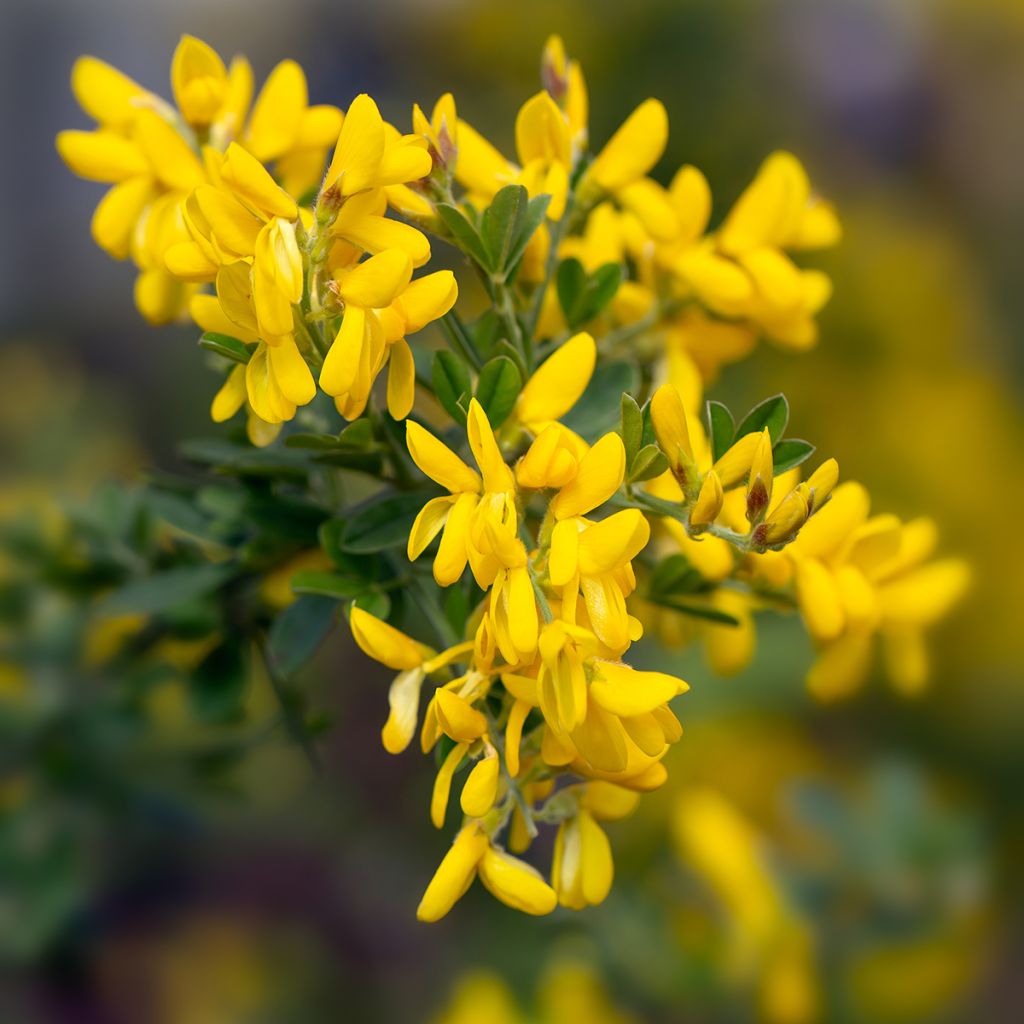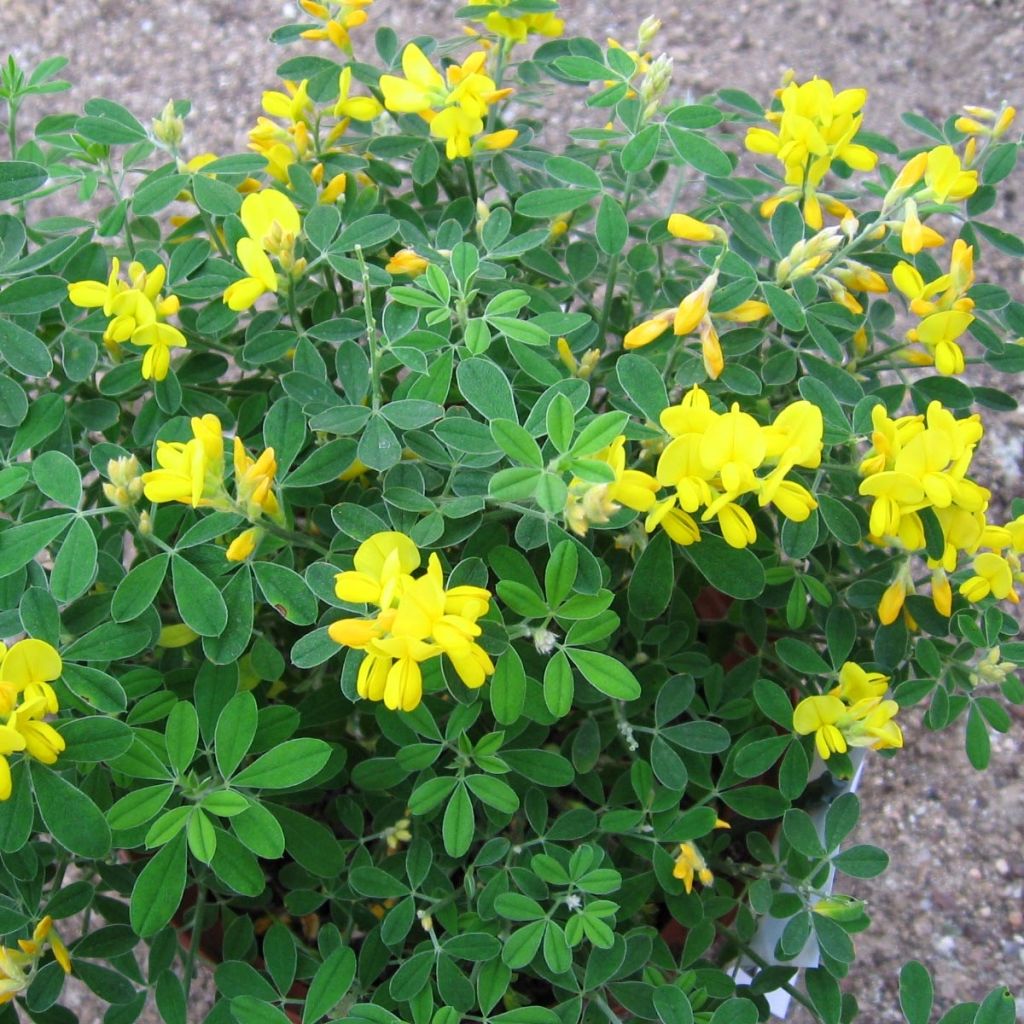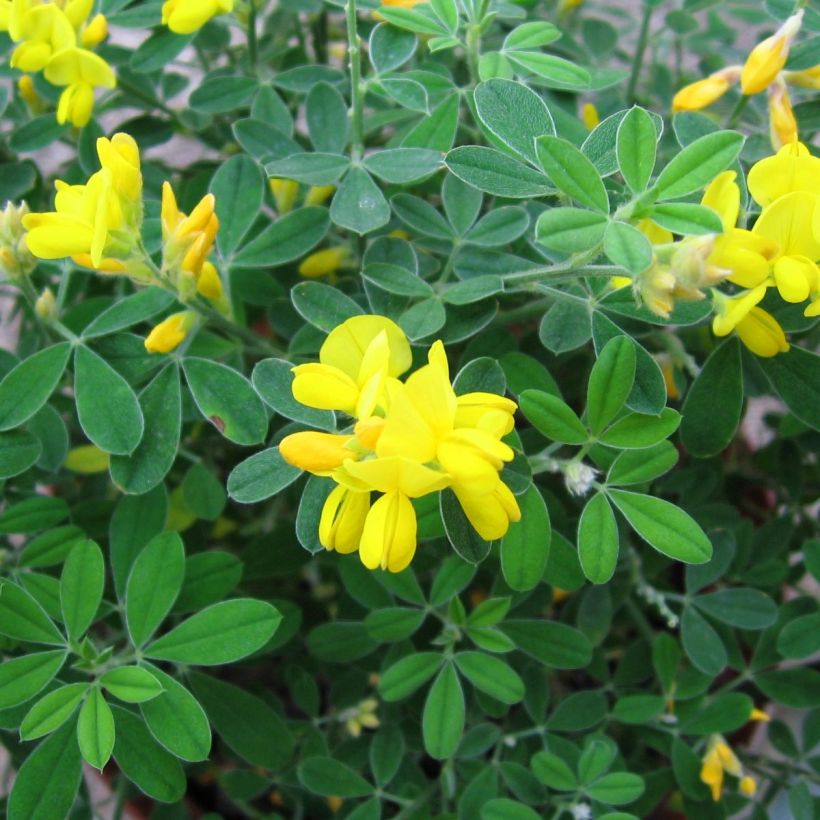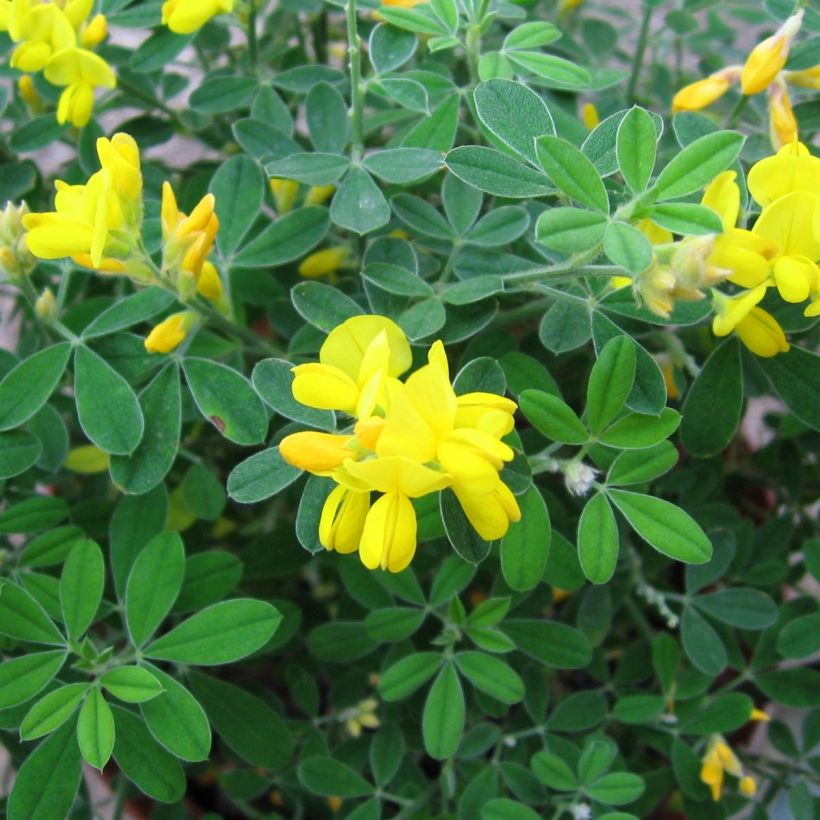

Genista Porlock


Genista Porlock


Genista Porlock
Genista Porlock
Genista Porlock
Broom, Greenweed
Beautiful, well-developed plant but with completely tangled roots. It's the first time I see this at Promesse de Fleurs. It took me a good half hour to try to untangle some of the roots, impossible to do it entirely. So, I am reserved about its future growth.
laurence, 09/10/2024
Special offer!
Receive a €20 voucher for any order over €90 (excluding delivery costs, credit notes, and plastic-free options)!
1- Add your favorite plants to your cart.
2- Once you have reached €90, confirm your order (you can even choose the delivery date!).
3- As soon as your order is shipped, you will receive an email containing your voucher code, valid for 3 months (90 days).
Your voucher is unique and can only be used once, for any order with a minimum value of €20, excluding delivery costs.
Can be combined with other current offers, non-divisible and non-refundable.
Home or relay delivery (depending on size and destination)
Schedule delivery date,
and select date in basket
This plant carries a 24 months recovery warranty
More information
We guarantee the quality of our plants for a full growing cycle, and will replace at our expense any plant that fails to recover under normal climatic and planting conditions.

Would this plant suit my garden?
Set up your Plantfit profile →
Description
Genista 'Porlock' is a hybrid broom that is covered with countless clusters of highly scented golden yellow flowers in spring. It occasionally flowers again in autumn if the weather is mild. It is a fast-growing small bush, with flexible, fuzzy, and semi-erect branches and charming small, dark green, semi-evergreen trifoliate leaves. Vigorous and hardy down to -10° C (14° F), it loves sun and heat, and tolerates temporary droughts and sea spray. Plant it in isolation, in a bed, as a free hedge, or even in a pot, in a sunny location in normal to poor, well-drained, and even chalky soil. Easy to maintain, simply perform light pruning after flowering to prevent fruit formation and promote a second flowering.
Most brooms are native to the Mediterranean region and the Middle East. They adapt to poor soils and generally prefer mild to warm climates. The 'Porlock' Broom is a cultivar developed by Norman G. Hadden, Porlock (GB) dating from before 1922 and resulting from the cross-breeding between Genista monspessulana and Genista spachiana.
The fast-growing 'Porlock' cultivar will reach approximately 2 m (6.6 ft) in all directions at maturity. Its habit is semi-erect. This compact shrub is composed of multiple cylindrical and slightly arched, fuzzy, finely branched, green-striped stems. They bear semi-evergreen dark green foliage, composed of tiny three-leaflet leaves that are 1 cm (0.4 in) long, which often fall with the arrival of summer heat, as photosynthesis is carried out by the green stems. The very abundant flowering takes place from April to May, in the form of countless clusters composed of bright golden yellow pea-like flowers. It is not uncommon to witness a second flowering in September-October if the climate is mild.
The 'Porlock' Broom is perfect for filling a large rocky slope, the top of a wall, or even in a bed with other wild-looking bushes. Consider using it in a container to adorn the surroundings of your house, for example. Play with its yellow flowering by planting it with other varieties of brooms or other shrubs that have simultaneous flowering, like Lithodoras or certain lavenders. You can also use it to extend the flowering period of your beds; forsythia blooms earlier, while St. John's Wort and white buddleias bloom at the same time, and the Afghan sage flowers until October. What is certain is that your 'Porlock' Broom, no matter where you choose to plant it in the garden, will bring a wonderful source of light and intense cheerfulness.
Report an error about the product description
Genista Porlock in pictures




Plant habit
Flowering
Foliage
Botanical data
Genista
Porlock
Fabaceae
Broom, Greenweed
Cultivar or hybrid
Planting and care
Plant in full sun, in poor to ordinary but well-drained, neutral or slightly chalky soil. Ideally, use a mixture of garden soil, coarse sand, leaf compost, and gravel. Make sure to install a drainage pit in heavy and suffocating soils, which are a bit too clayey. Water abundantly at planting to remove air pockets, and regularly thereafter to help the bush establish. In the first few years after planting, water regularly in case of dry and hot summers. Once well-established, it will withstand summer droughts. This plant, like many brooms, is not prone to diseases and parasites.
Planting period
Intended location
Care
-
, onOrder confirmed
Reply from on Promesse de fleurs
Haven't found what you were looking for?
Hardiness is the lowest winter temperature a plant can endure without suffering serious damage or even dying. However, hardiness is affected by location (a sheltered area, such as a patio), protection (winter cover) and soil type (hardiness is improved by well-drained soil).

Photo Sharing Terms & Conditions
In order to encourage gardeners to interact and share their experiences, Promesse de fleurs offers various media enabling content to be uploaded onto its Site - in particular via the ‘Photo sharing’ module.
The User agrees to refrain from:
- Posting any content that is illegal, prejudicial, insulting, racist, inciteful to hatred, revisionist, contrary to public decency, that infringes on privacy or on the privacy rights of third parties, in particular the publicity rights of persons and goods, intellectual property rights, or the right to privacy.
- Submitting content on behalf of a third party;
- Impersonate the identity of a third party and/or publish any personal information about a third party;
In general, the User undertakes to refrain from any unethical behaviour.
All Content (in particular text, comments, files, images, photos, videos, creative works, etc.), which may be subject to property or intellectual property rights, image or other private rights, shall remain the property of the User, subject to the limited rights granted by the terms of the licence granted by Promesse de fleurs as stated below. Users are at liberty to publish or not to publish such Content on the Site, notably via the ‘Photo Sharing’ facility, and accept that this Content shall be made public and freely accessible, notably on the Internet.
Users further acknowledge, undertake to have ,and guarantee that they hold all necessary rights and permissions to publish such material on the Site, in particular with regard to the legislation in force pertaining to any privacy, property, intellectual property, image, or contractual rights, or rights of any other nature. By publishing such Content on the Site, Users acknowledge accepting full liability as publishers of the Content within the meaning of the law, and grant Promesse de fleurs, free of charge, an inclusive, worldwide licence for the said Content for the entire duration of its publication, including all reproduction, representation, up/downloading, displaying, performing, transmission, and storage rights.
Users also grant permission for their name to be linked to the Content and accept that this link may not always be made available.
By engaging in posting material, Users consent to their Content becoming automatically accessible on the Internet, in particular on other sites and/or blogs and/or web pages of the Promesse de fleurs site, including in particular social pages and the Promesse de fleurs catalogue.
Users may secure the removal of entrusted content free of charge by issuing a simple request via our contact form.
The flowering period indicated on our website applies to countries and regions located in USDA zone 8 (France, the United Kingdom, Ireland, the Netherlands, etc.)
It will vary according to where you live:
- In zones 9 to 10 (Italy, Spain, Greece, etc.), flowering will occur about 2 to 4 weeks earlier.
- In zones 6 to 7 (Germany, Poland, Slovenia, and lower mountainous regions), flowering will be delayed by 2 to 3 weeks.
- In zone 5 (Central Europe, Scandinavia), blooming will be delayed by 3 to 5 weeks.
In temperate climates, pruning of spring-flowering shrubs (forsythia, spireas, etc.) should be done just after flowering.
Pruning of summer-flowering shrubs (Indian Lilac, Perovskia, etc.) can be done in winter or spring.
In cold regions as well as with frost-sensitive plants, avoid pruning too early when severe frosts may still occur.
The planting period indicated on our website applies to countries and regions located in USDA zone 8 (France, United Kingdom, Ireland, Netherlands).
It will vary according to where you live:
- In Mediterranean zones (Marseille, Madrid, Milan, etc.), autumn and winter are the best planting periods.
- In continental zones (Strasbourg, Munich, Vienna, etc.), delay planting by 2 to 3 weeks in spring and bring it forward by 2 to 4 weeks in autumn.
- In mountainous regions (the Alps, Pyrenees, Carpathians, etc.), it is best to plant in late spring (May-June) or late summer (August-September).
The harvesting period indicated on our website applies to countries and regions in USDA zone 8 (France, England, Ireland, the Netherlands).
In colder areas (Scandinavia, Poland, Austria...) fruit and vegetable harvests are likely to be delayed by 3-4 weeks.
In warmer areas (Italy, Spain, Greece, etc.), harvesting will probably take place earlier, depending on weather conditions.
The sowing periods indicated on our website apply to countries and regions within USDA Zone 8 (France, UK, Ireland, Netherlands).
In colder areas (Scandinavia, Poland, Austria...), delay any outdoor sowing by 3-4 weeks, or sow under glass.
In warmer climes (Italy, Spain, Greece, etc.), bring outdoor sowing forward by a few weeks.
































